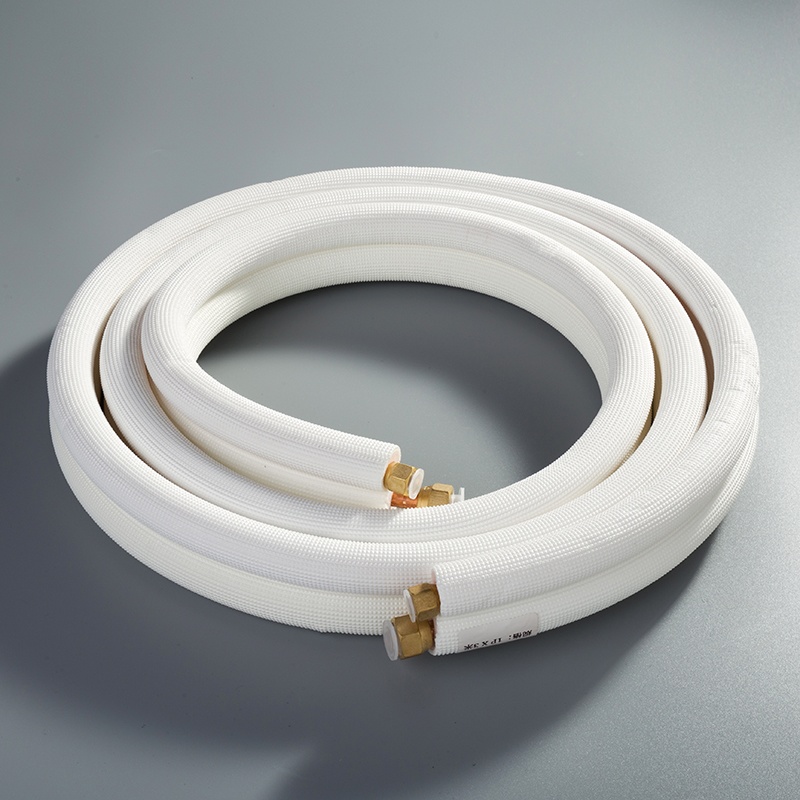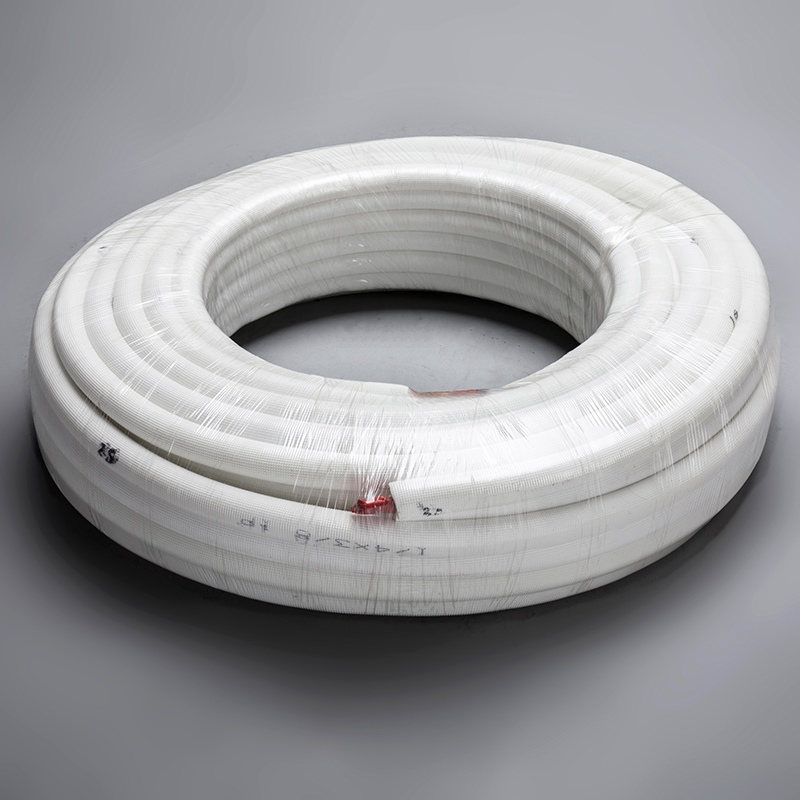The Definitive Guide to Choosing Air Conditioning Copper Pipes

Choosing the right air conditioning copper pipes is essential for maintaining the efficiency and longevity of HVAC systems. In this guide, we’ll explore why copper pipes are the preferred choice for air conditioning applications. Known for their exceptional thermal conductivity, copper pipes enhance energy efficiency and help reduce operational costs. Their natural corrosion resistance ensures long-lasting performance, making them a reliable option for both residential and industrial settings. High-quality copper piping facilitates optimal heat transfer, ensuring consistent temperatures and the ability to withstand high pressures. By selecting the appropriate air conditioning copper pipes, you can significantly improve the reliability and sustainability of your HVAC system.
Understanding Copper Pipes

Types of Copper Pipes
Type K Copper Pipes
Type K copper pipes provide exceptional durability and pressure resistance. These pipes are ideal for underground installations and high-temperature environments. Their robust construction makes them suitable for large-scale industrial projects and public infrastructure developments. The ability to withstand extreme conditions ensures reliable performance in demanding applications.
Type L Copper Pipes
Type L copper pipes feature thicker walls, making them a preferred choice for high-pressure systems. These pipes are versatile and commonly used in both residential and commercial air conditioning systems. Applications include interior plumbing, fire protection systems, and refrigerant lines. The balance between cost and durability makes Type L copper pipes the most prevalent option for HVAC installations.
Type M Copper Pipes
Type M copper pipes offer a cost-effective solution for contractors and homeowners. The thinner walls make these pipes easier to handle and install. Residential construction and home renovation projects frequently utilize Type M pipes due to their affordability. Despite being lighter than other types, these pipes still deliver reliable performance in low-pressure applications.
ACR Copper Pipes
ACR (Air Conditioning and Refrigeration) copper pipes are specifically designed for HVAC systems. These pipes undergo a dehydration process to remove moisture, ensuring compatibility with refrigerants. The smooth interior surface minimizes friction, enhancing the efficiency of refrigerant flow. ACR copper pipes are essential components in modern air conditioning systems.
Properties of Copper Pipes
Durability
Copper pipes exhibit outstanding durability, making them a long-lasting choice for air conditioning systems. The material resists wear and tear, even under high-pressure conditions. This property reduces the need for frequent replacements, contributing to cost savings over time.
Thermal Conductivity
The superior thermal conductivity of copper enhances heat transfer in HVAC systems. Efficient heat exchange improves energy efficiency and reduces operational costs. This property makes copper an indispensable material in air conditioning applications.
Corrosion Resistance
Copper pipes resist corrosion, ensuring consistent performance over extended periods. This property is particularly valuable in environments exposed to moisture or chemicals. The natural resistance to rust and degradation extends the lifespan of copper piping systems.
Common Applications in Air Conditioning
Residential Systems
Residential air conditioning systems often rely on copper pipes for their efficiency and reliability. Type L copper pipes are commonly used due to their ability to handle moderate pressure levels. The lightweight nature of copper simplifies installation in homes, making it a practical choice for residential HVAC systems.
Commercial Systems
Commercial air conditioning systems demand robust materials to handle higher pressures and larger loads. Type K and Type L copper pipes are frequently utilized in commercial settings. Their durability and thermal conductivity ensure optimal performance in office buildings, retail spaces, and industrial facilities.
Factors to Consider When Choosing Copper Pipes

Pipe Size and Diameter
Standard Sizes
Copper pipes for air conditioning systems come in a variety of standard sizes. Common sizes include 6 mm, 10 mm, 12 mm, 15 mm, 22 mm, 28 mm, 35 mm, 42 mm, and 54 mm. Each size serves specific applications based on the system's requirements. Smaller diameters, such as 1/4 inch or 3/8 inch, are often used for liquid lines in residential systems. Larger diameters, like 5/8 inch or 7/8 inch, are suitable for suction lines in commercial setups. Selecting the correct size ensures efficient refrigerant flow and prevents pressure drops.
How to Measure
Accurate measurement of copper pipes is essential for proper installation. The outer diameter (OD) and wall thickness determine the pipe's suitability for specific applications. A caliper or pipe gauge can measure the OD precisely. Wall thickness can be verified using micrometers. Ensuring compatibility between the pipe size and the HVAC system specifications avoids performance issues. Proper measurements also enhance the longevity of the system by reducing strain on components.
Compatibility with Refrigerants
Common Refrigerants
Air conditioning systems utilize various refrigerants, including R-22, R-410A, and R-32. Each refrigerant possesses unique chemical properties that influence its interaction with copper pipes. R-410A, a widely used refrigerant, operates at higher pressures and requires pipes with thicker walls, such as Type L copper pipes. R-32, known for its environmental benefits, also demands high-quality copper piping to maintain system efficiency.
Compatibility Issues
Incompatibility between refrigerants and copper pipes can lead to system failures. Certain refrigerants may cause chemical reactions with the pipe material, leading to corrosion or leaks. For instance, older systems using R-22 may require specific pipe coatings to prevent degradation. Selecting copper pipes designed for modern refrigerants ensures optimal performance. Proper compatibility reduces maintenance costs and enhances the overall reliability of the HVAC system.
Cost Considerations
Initial Cost
The initial cost of copper pipes varies based on type and size. Type M copper pipes, with thinner walls, offer a cost-effective solution for residential applications. Type L pipes, with thicker walls, provide durability for high-pressure systems but come at a higher price. Type K pipes, the thickest and most robust, are the most expensive option. Balancing budget constraints with system requirements helps in making an informed decision.
Long-term Cost Efficiency
Long-term cost efficiency depends on the durability and performance of the chosen copper pipes. Thicker-walled pipes, such as Type L or Type K, reduce the need for frequent replacements. Enhanced thermal conductivity in high-quality copper pipes lowers energy consumption. Investing in durable pipes minimizes repair costs and extends the lifespan of the HVAC system. Long-term savings outweigh the higher initial investment in premium copper piping.
Installation and Maintenance
Installation Tips
Proper installation of air conditioning copper pipes ensures optimal system performance. Selecting the correct pipe type for the application is essential. For residential systems, Type M copper pipes provide a cost-effective option. For high-pressure or industrial applications, Type L copper pipes deliver superior durability. Measuring the pipe diameter accurately prevents refrigerant flow issues. Using a pipe gauge or caliper ensures precise measurements.
Cutting copper pipes requires specialized tools to maintain clean edges. A pipe cutter minimizes burrs, which can obstruct refrigerant flow. Deburring tools smooth the edges after cutting. This step reduces the risk of leaks during operation. Flaring or brazing techniques ensure secure connections between pipes. High-quality fittings enhance the reliability of the system.
During installation, securing copper pipes with proper supports prevents sagging. Pipe clamps or brackets maintain alignment and reduce vibration. Insulating the pipes minimizes energy loss and prevents condensation. Foam insulation sleeves are commonly used for this purpose. Following manufacturer guidelines for refrigerant compatibility ensures long-term system efficiency.
Maintenance Best Practices
Regular maintenance extends the lifespan of air conditioning copper pipes. Inspecting the pipes periodically identifies potential issues early. Signs of corrosion, leaks, or physical damage require immediate attention. Cleaning the exterior surface of the pipes removes dirt and debris. This practice prevents contaminants from affecting the system's performance.
Checking the insulation on copper pipes maintains energy efficiency. Damaged or worn insulation should be replaced promptly. Monitoring refrigerant levels ensures proper system operation. Low refrigerant levels may indicate leaks in the piping. Professional technicians should address such issues to prevent further damage.
Applying protective coatings enhances the corrosion resistance of copper pipes. This step is particularly important in environments with high humidity or chemical exposure. Avoiding contact between copper pipes and incompatible materials prevents galvanic corrosion. Proper spacing between pipes and other components reduces wear caused by friction.
Scheduling routine inspections by HVAC professionals ensures comprehensive maintenance. Professionals use advanced tools to detect hidden issues. Preventive measures reduce repair costs and downtime. Adhering to maintenance best practices improves the reliability and longevity of air conditioning systems.
Practical Tips for Selecting Copper Pipes
Consulting with Professionals
When to Seek Professional Advice
Professional advice becomes essential when selecting copper pipes for air conditioning systems. Complex HVAC setups often require precise specifications for pipe size, type, and compatibility with refrigerants. Professionals possess the expertise to evaluate system requirements and recommend suitable options. High-pressure systems or industrial applications demand specialized knowledge to ensure optimal performance. Seeking guidance during installation or maintenance phases helps avoid costly errors.
Questions to Ask
Asking relevant questions ensures informed decisions when consulting professionals. Inquiries about the recommended pipe type for specific HVAC systems provide clarity. Questions about compatibility with refrigerants help prevent future issues. Professionals should explain the benefits of different pipe sizes and wall thicknesses. Understanding the long-term cost implications of selected materials aids in budgeting. Requesting information about installation techniques and maintenance practices enhances system reliability.
Evaluating Product Quality
Certifications and Standards
Certifications and standards serve as reliable indicators of high-quality copper pipes. Industry-recognized certifications, such as ASTM B88 or EN 12735-1, validate product performance. Compliance with these standards ensures durability, thermal conductivity, and corrosion resistance. Certified products undergo rigorous testing to meet safety and efficiency benchmarks. Verifying certifications before purchase guarantees compatibility with air conditioning systems.
Signs of High-Quality Copper Pipes
High-quality copper pipes exhibit specific characteristics that enhance performance. Smooth interior surfaces reduce friction and improve refrigerant flow. Uniform wall thickness ensures consistent pressure handling across the pipe length. Resistance to corrosion and wear indicates superior material quality. Pipes with clear labeling of size, type, and manufacturing details reflect professional-grade production. Inspecting for physical defects, such as dents or irregularities, helps identify reliable products.
Comparing Different Brands
Brand Reputation
Brand reputation plays a significant role in selecting copper pipes for air conditioning systems. Established manufacturers often maintain consistent quality across their product lines. Positive feedback from industry professionals highlights reliable brands. Companies with a history of innovation and adherence to standards inspire confidence. Researching brand performance in similar HVAC applications aids in making informed choices.
Customer Reviews
Customer reviews provide valuable insights into the performance of copper pipes in real-world scenarios. Feedback from users highlights strengths and weaknesses of specific products. Reviews often include details about ease of installation, durability, and compatibility. High ratings and positive testimonials indicate customer satisfaction. Analyzing reviews from trusted sources ensures accurate assessments of product reliability.
Selecting the right air conditioning copper pipes ensures efficiency, durability, and cost-effectiveness in HVAC systems. Key considerations include pipe type, size, compatibility with refrigerants, and long-term maintenance. High-quality copper pipes offer excellent thermal conductivity, corrosion resistance, and environmental benefits, making them a sustainable choice for modern applications. Professional consultation provides valuable insights into system-specific requirements, ensuring optimal performance. A well-informed decision enhances system reliability and reduces operational costs. For further assistance, refer to trusted resources or seek expert advice to make the best choice.
See Also
The Benefits of Selecting Copper Pipes for AC Systems
Transforming Air Conditioning with Pure Copper Pipe Solutions
The Importance of Pure Copper Pipes for AC Efficiency
Essential Guide to Buying Copper Pipe Coils for HVAC
Comprehensive Tips for Maintaining Efficiency of Copper Pipes


